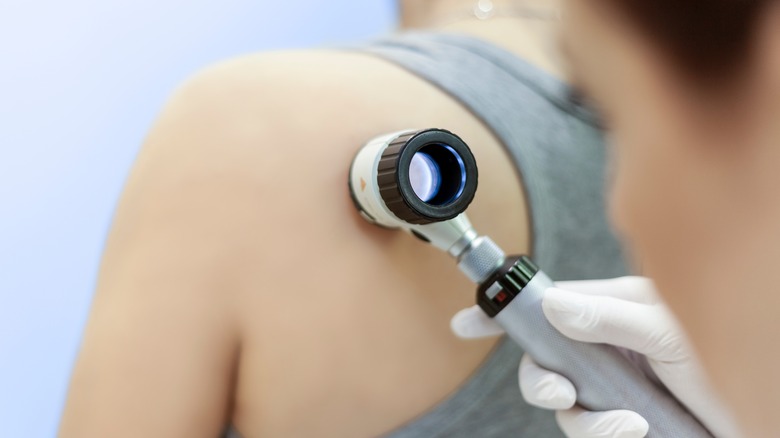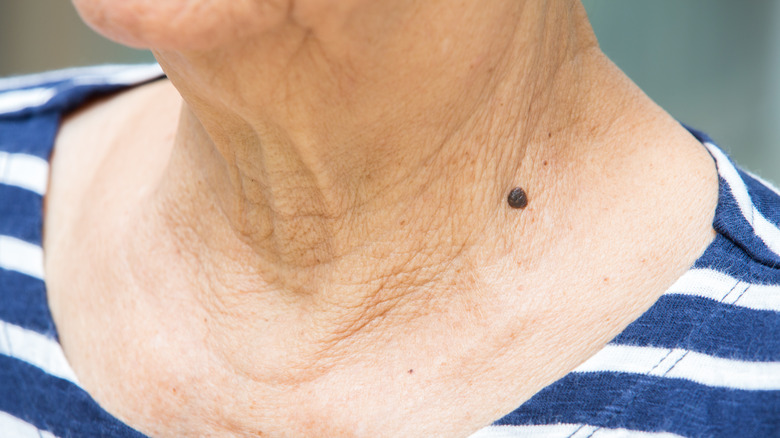Is There A Link Between Breast Cancer And Moles On Your Body?
The average adult has approximately 10 to 40 moles, otherwise known as nevi, on their body, says the American Cancer Society (ACS). An interesting fact is that most people stop developing new moles after age 40. Most moles are benign, meaning that they aren't cancerous, and don't pose any issue to health. However, sometimes moles can tell us if there is something else going on in our bodies. You've probably heard that you should have moles checked out by a dermatologist to see if they might be skin cancer, but could a mole also be a sign of breast cancer?
It's estimated that one in eight women will develop breast cancer in her lifetime, and today breast cancer makes up one of the most commonly diagnosed types of cancers in female patients (per ACS). According to the Centers for Disease Control and Prevention (CDC), the most prevalent symptoms of breast cancer are a lump within breast tissue, dimpling of breast skin, discharge that isn't breast milk, skin that is irritated or flaky, and pain within the breast area. While these symptoms are all focused around the breast area, other signs of breast cancer can be found across the body.
The relationship between moles and breast cancer
Several studies have found correlations between the number of moles a woman has on her body and her risk for developing breast cancer, reports Healthline. Women with more moles have been found to be at higher risk of developing certain types of breast cancers, but it's important to note that the number of moles a woman has is a definitive screening of her risk for developing breast cancer. Researchers determined that women who have more moles tend to also have family histories of breast cancer — one of the biggest indicators of breast cancer risk. No matter the number of moles, all women are recommended to begin receiving mammograms annually at age 45 if they're at high risk for breast cancer. Women ages 40 and over can elect to schedule mammograms.
In addition to more moles being linked to an increased risk of developing breast cancer, having 50 or more moles in total on your body, whether you're female or male, can place you at a higher risk of developing skin cancer, according to the National Cancer Institute. Additionally, it's possible to develop a cancerous mole on breast tissue, though that is distinct from a breast cancer diagnosis. When checking moles, always follow the ABCDE rule for asymmetry, border, color, diameter, and evolution. If you're concerned about moles on your skin, it's best to make an appointment for an evaluation with a dermatologist.


